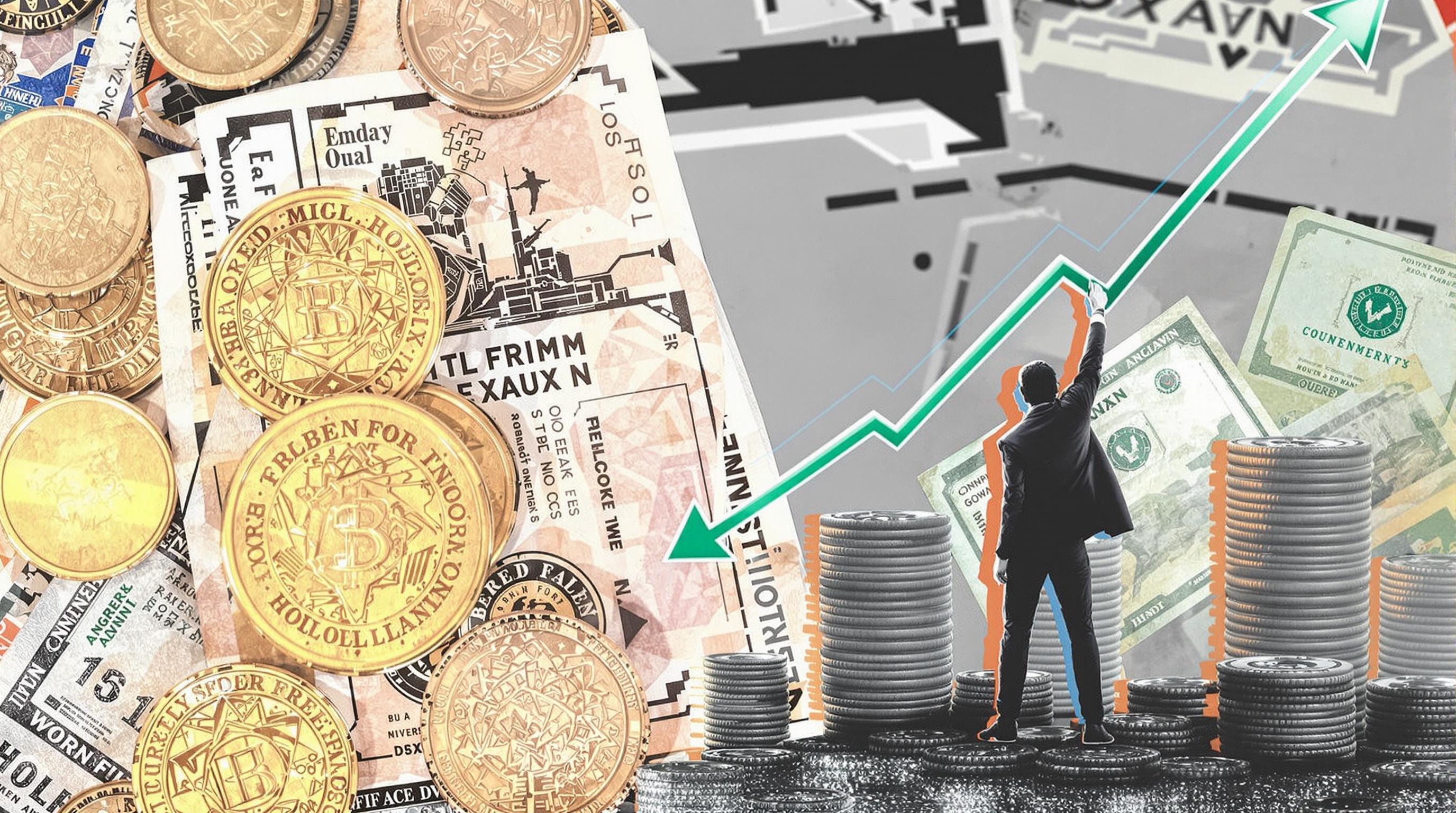Related Articles
- 7 Best Alternative Inflation Shields of the Last Five Years That Outsmart Traditional Safeguards
- Unseen Ripples: How Climate Change Could Reshape Educational Investment Strategies by 2030
- 7 Emerging Bond Ladder ETFs Released Since 2019 That Outsmart Traditional Fixed Income Choices
- 7 Innovative Social Security Management Tools Released Since 2019 That Transform Benefit Tracking and Planning
- 7 Emerging Annuity Plans of the Last 5 Years Demystified and Ranked for Modern Investors
- 7 Emerging REIT Platforms of the Last 5 Years That Are Disrupting Traditional Real Estate Investing Norms
7 Best Alternative Inflation Shields of the Last Five Years That Outsmart Traditional Safeguards
7 Best Alternative Inflation Shields of the Last Five Years That Outsmart Traditional Safeguards
Inflation can gnaw away at your savings, but not all shelters from it wear the same suit. From real estate gems to digital gold, here are seven alternative inflation shields from the last five years that have outplayed traditional investments like bonds and cash.
Why Rethink Traditional Inflation Safeguards?
For decades, U.S. Treasury Inflation-Protected Securities (TIPS), gold bullion, and certain bonds have been the go-to fortress against inflation’s bite. However, these 'traditional' sanctuaries often come with limitations—TIPS may not beat high inflation spurts, and gold's volatility sometimes terrifies investors. This calls for exploring alternatives that offer superior resilience and growth.
The Case for Real Estate Investment Trusts (REITs)
Real estate has long been championed as a hedge against rising prices—property values and rents tend to climb with inflation. In the last half-decade, REITs have outperformed the S&P 500 in inflationary times. For instance, between 2018 and 2023, data shows that commercial REITs yielded an average annual return of 10.6%, compared to 7.1% for traditional stocks (Nareit, 2023).
Moreover, REITs provide liquidity absent in direct real estate, allowing investors to quickly adapt to market changes.
Cryptocurrency: Digital Gold or Fool's Gold?
I’m 25 and remain a skeptic, but the younger crowd swears by cryptocurrency as a hedge. Bitcoin, dubbed "digital gold," has often surged during fiat currency instability. Yet, its volatile swings—like a 60% plunge in 2022—pose risks. Nevertheless, over the past five years, Bitcoin has averaged a yearly return exceeding 70%, outperforming gold and TIPS combined (CoinMetrics, 2023).
One must weigh high risk against potential high reward—cryptocurrency isn’t for the faint of heart.
Farmland: Nature’s Inflation-Arming Ally
Imagine owning a piece of earth that produces what the world can't live without: food. Farmland has quietly beaten inflation rates, with the average value per acre increasing over 30% since 2018 (U.S. Department of Agriculture, 2023). Agri-investments offer consistent cash flow through leases and tend to be less correlated with stock markets. In times of economic uncertainty, people still have to eat—making farmland an evergreen financial resource.
Peer-to-Peer Lending Platforms: Earning Through Empowerment
Here's a cool fact: peer-to-peer (P2P) lending has built a microeconomy of its own. By funding small borrowers directly, investors have earned higher interest rates than fixed income instruments. Platforms like LendingClub showed average returns near 6.5% annually from 2018-2023, often outpacing inflation (~3.1% annual average) (LendingClub Investor Reports, 2023).
Yes, it involves risk—borrower default is a real possibility—but with proper diversification, P2P lending shines as a creative alternative.
The Stealthy Rise of Collectibles
Vintage watches, rare sneakers, even comic books—what do they share? They are in the spotlight as alternative assets. A 2022 report from Sotheby's found that certain collectibles' prices increased by 45% over five years, compared to a 20% rise in traditional art investments.
I’m 45, and honestly, the charm here is twofold: you actually enjoy your investment while it appreciates. Think pieces you’d show off at gatherings! But beware, liquidity can be patchy, and market fads come and go.
Commodity Futures: The High-Stakes Inflation Guards
Commodity futures—contracts to buy or sell raw materials at predetermined prices—are often overlooked due to complexity but can safeguard purchasing power. Over the past five years, key commodities like oil and copper have tracked inflation closely, sometimes even outpacing it due to geopolitical tensions and supply chain issues.
Take copper, essential for electrification infrastructure, rallying from approximately $6,000 per ton in 2018 to over $9,000 in 2023 (London Metal Exchange, 2023). However, futures require expertise, capital, and appetite for risk.
Inflation-Linked Bonds in Emerging Markets
While U.S. inflation-linked bonds (TIPS) are well-known, emerging markets have begun issuing their own versions offering potentially higher yields, albeit with increased political and currency risk. Countries like Brazil and South Africa have seen these inflation-linked bonds outperform standard sovereign debt by an average of 3 percentage points annually over the last five years (JP Morgan Emerging Markets Report, 2023).
Story Time: Grandma’s Secret Weapon
Let me share a tale from my 70-year-old grandmother, who in 2019 shifted part of her savings into fine art during a dominant inflation scare. She wasn’t chasing trends but turned to her lifelong passion—art collecting. Over four years, the value of her pieces appreciated by an astonishing 35%, shielding her nest egg from eroding purchasing power.
This just goes to show, sometimes inflation shields come disguised as passions.
Summing It Up: Diversify and Conquer
Traditional inflation shields still have their place, but the last five years taught us to think broadly. Real estate, cryptocurrencies, farmland, collectibles, peer-to-peer lending, commodity futures, and emerging market inflation bonds each exhibit unique strengths and risks.
Diversifying across different alternative assets while understanding individual risk tolerance offers a smarter path to outpacing inflation—and potentially growing wealth in turbulent times.
Sources:
- Nareit Annual Performance Report, 2023
- CoinMetrics Data, 2023
- U.S. Department of Agriculture, Land Values Summary, 2023
- LendingClub Investor Reports, 2023
- Sotheby's Collectibles Market Report, 2022
- London Metal Exchange Commodity Pricing, 2023
- JP Morgan Emerging Markets Debt Report, 2023

